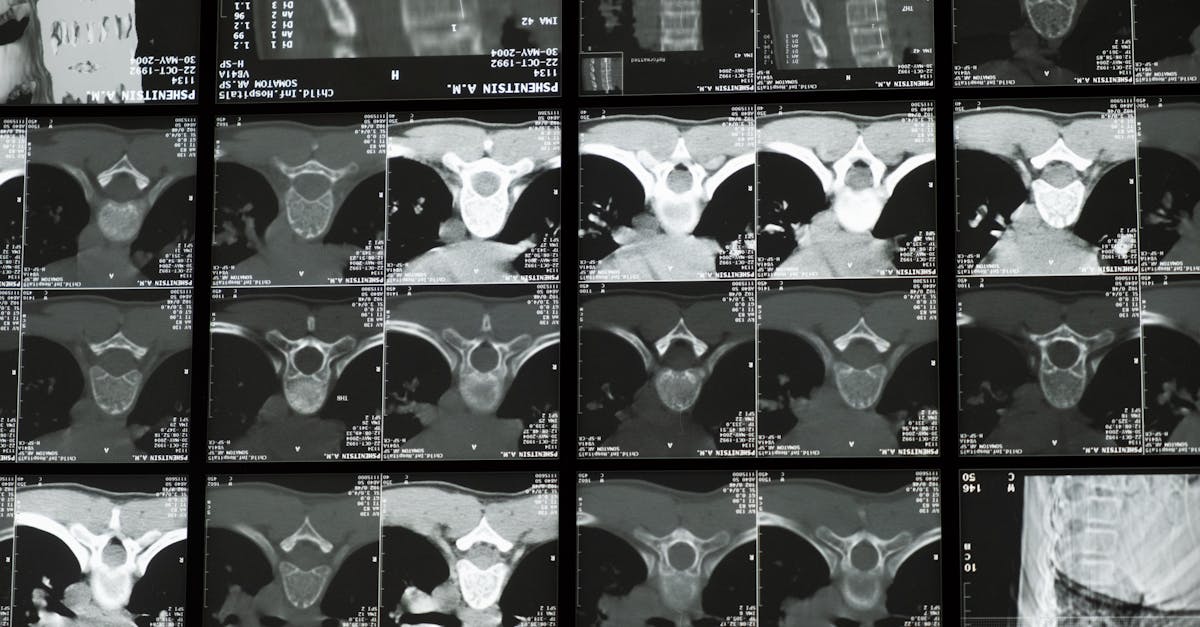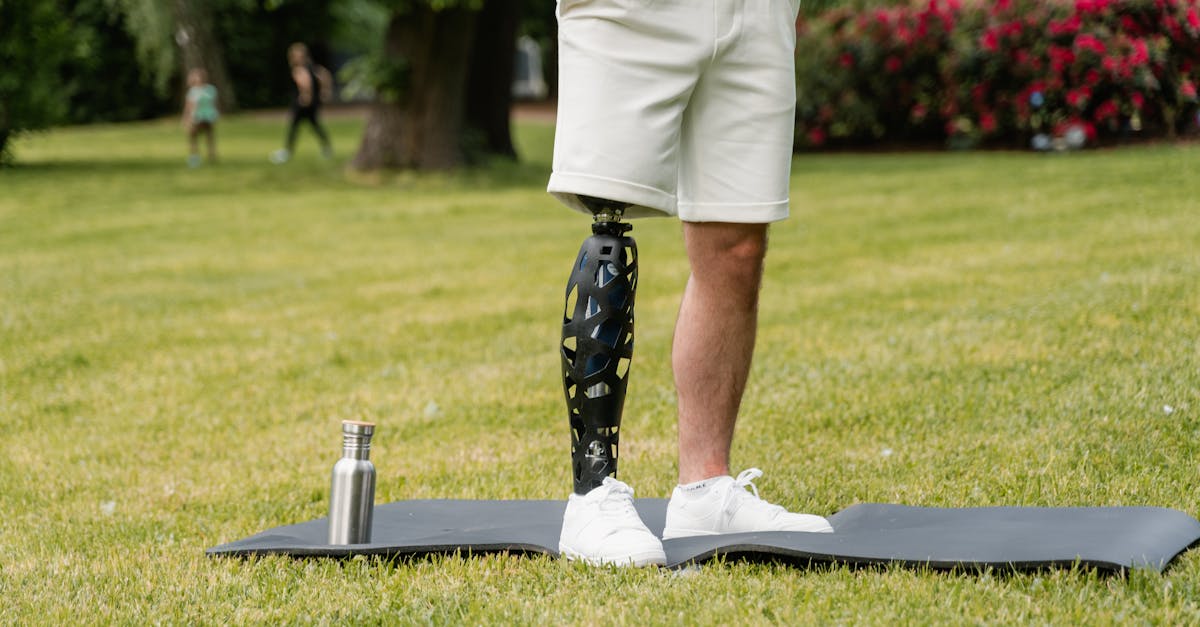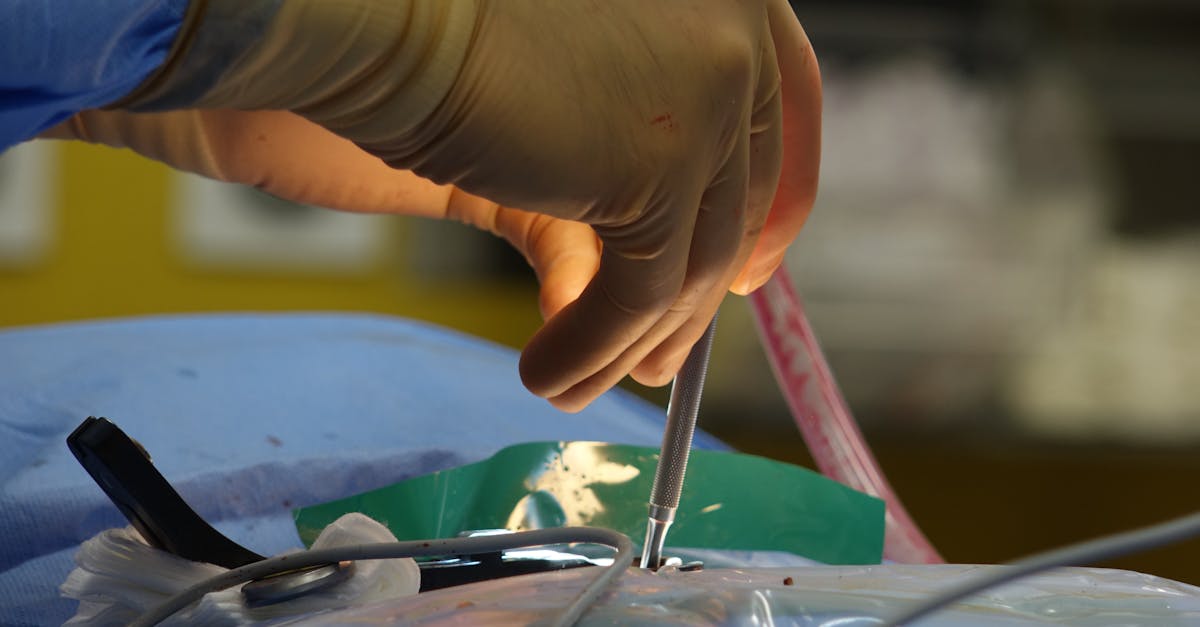|
In Short, non-invasive strategies for scoliosis prevention are effective approaches aimed at addressing the progression of spinal curvature without the need for surgery. Techniques such as physical therapy, bracing, and the Schroth Method are designed to enhance posture and provide significant improvements in spinal health. These methods are beneficial for individuals of all ages, promoting better muscle strength, and supporting overall mobility. By integrating customized exercise plans and nutritional support, these interventions help manage chronic discomfort and foster a healthier alignment, ultimately making scoliosis management accessible and effective. |
Non-invasive strategies for scoliosis prevention encompass a variety of effective methods aimed at addressing the condition without surgical intervention. Key approaches include physical therapy that focuses on strengthening back muscles and enhancing posture, alongside bracing options particularly effective for adolescents. Innovative techniques such as the Schroth Method provide personalized exercises tailored to individual spinal curvature. Additionally, lifestyle modifications involving regular check-ups, nutritional support, and customized exercise plans contribute crucially in managing and preventing the progression of scoliosis.
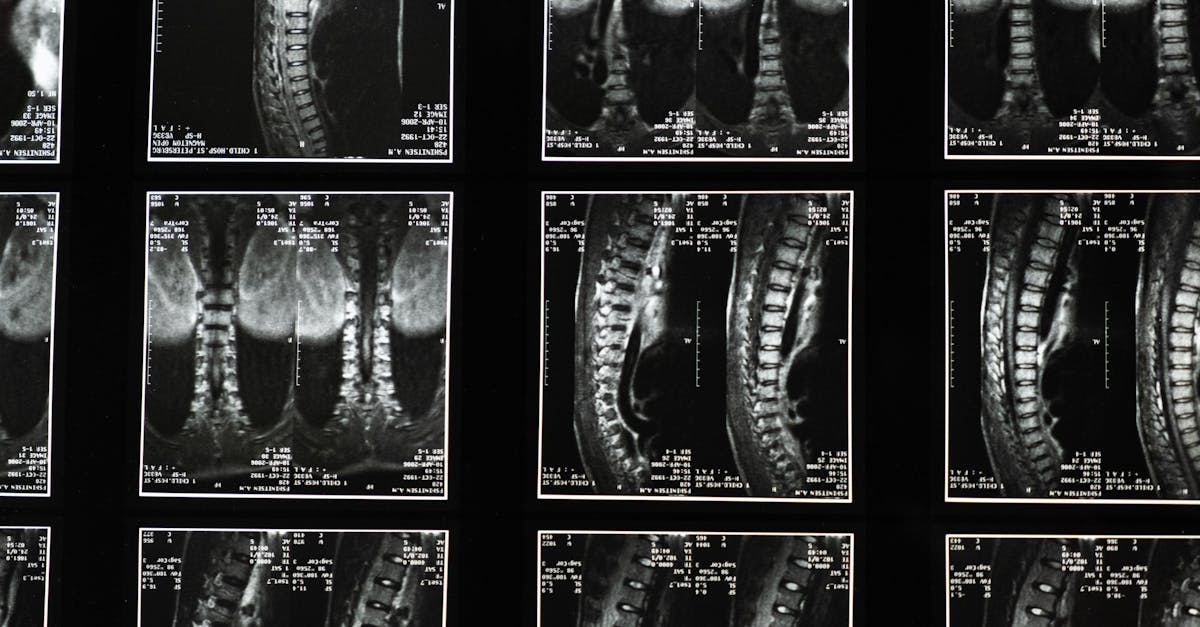
Welcome to Pulse Align: Your Path to Natural Balance and Well-Being
At Pulse Align, we are excited to introduce you to a non-invasive approach that helps your body restore its natural balance and posture through gentle, imperceptible pulses. Our innovative method promotes muscle tone symmetry and enhances overall well-being, enabling clients to experience reduced tension and improved comfort in their daily lives. By fostering a nurturing environment, we prioritize your wellness journey while respecting the body’s innate ability to restore its natural state.
Discover the Benefits of Gentle Recalibration
Our services focus on offering a gentle and alternative method that promotes overall well-being without targeting discomfort directly. By allowing your body to recalibrate naturally, clients often report feeling more at ease, resulting in more harmonious movement patterns and improved posture. At Pulse Align, our aim is to support you as your body adapts and flourishes in response to our unique techniques.
Personalized Experiences, Positive Outcomes
At Pulse Align, we believe in a personalized approach for all clients, and many of our clients have shared their stories of notable improvements in overall wellness, including a greater sense of balance in their posture and reduced tension in their neck and back areas. Feedback from clients illustrates the benefits of engaging in our empathetic process. Our commitment to fostering a welcoming environment allows families—children, adults, and pregnant women—to explore well-being together while benefiting from tailored experiences.
Join Us on the Road to Enhanced Wellness
We invite you to visit the Pulse Align website to learn more about our approach and find nearby locations, including clinics in La Prairie, Mont-Royal, and Terrebonne. Book a consultation for yourself or your family today and discover how our safe, non-invasive, and family-friendly methods can support your path to well-being. Pulse Align complements your existing healthcare services by providing a nurturing space for natural recovery that keeps you and your family in optimal health.
- Posture Awareness: Regularly assess and adjust your body alignment during daily activities.
- Physical Therapy: Engage in exercises targeting spinal stability and muscle strength.
- Schroth Method: Learn individualized techniques to correct postural imbalances through exercise.
- Bracing: Utilize braces to support spinal alignment in growing children.
- Customized Exercise Plans: Implement specific workouts to strengthen back and core muscles.
- Nutritional Support: Maintain a balanced diet rich in vitamins and minerals for optimal bone health.
- Regular Check-Ups: Schedule frequent appointments with healthcare professionals for early detection.
- Mindfulness Practices: Incorporate mindfulness techniques to enhance bodily awareness and promote relaxation.
- Pilates: Use Pilates to improve flexibility and engage core muscles, supporting proper alignment.
- Bodyweight Exercises: Perform simple movements that utilize your body weight to enhance balance and stability.
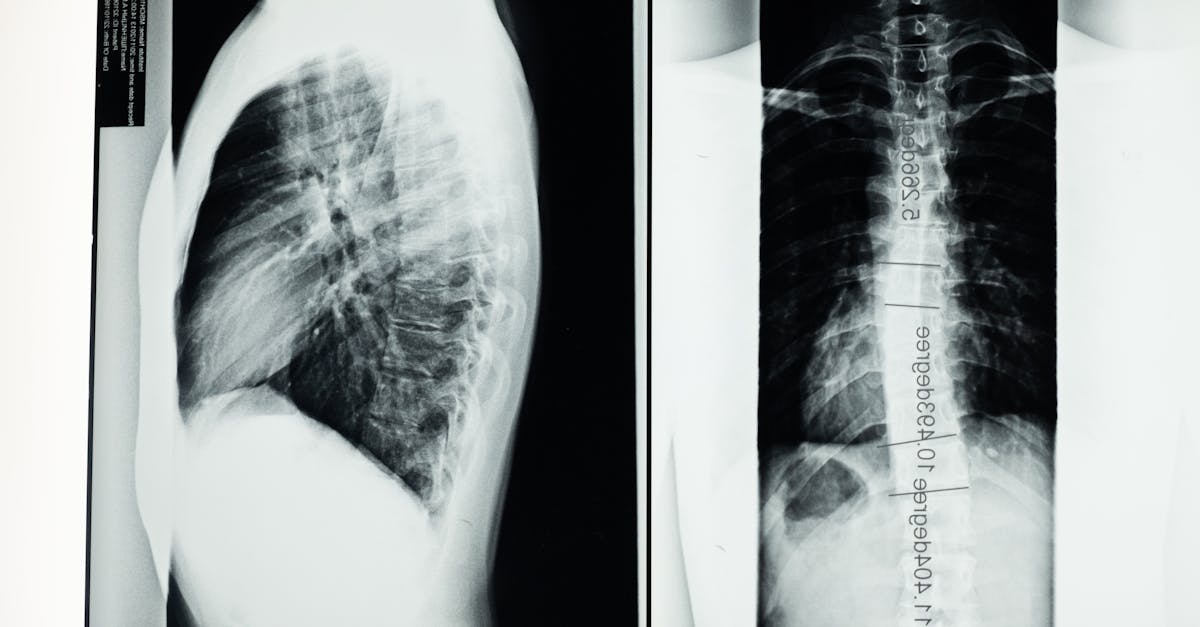
Scoliosis, characterized by an abnormal curvature of the spine, can significantly affect one’s well-being if not managed properly. Thankfully, various non-invasive strategies exist that can help prevent the progression of scoliosis. This article explores effective methods, including physical therapy, bracing, tailored exercise programs, and nutritional support, all aimed at promoting spinal health and enhancing overall quality of life for both children and adults.
Regular Observation and Monitoring
One of the key components of scoliosis prevention is maintaining regular observation and monitoring. Parents and caregivers should be vigilant in watching for any signs of asymmetry in their child’s posture, such as uneven shoulders or waistlines. Regular check-ups with healthcare professionals ensure that any developing curvature is identified early on, allowing for timely intervention. Early detection is crucial as it allows for less invasive treatments and helps prevent the progression of the condition.
Physical Therapy
Physical therapy serves as a vital non-invasive treatment for managing scoliosis. Tailored therapy programs focus on enhancing strength in the muscles surrounding the spine while improving overall posture and flexibility. These programs often incorporate exercises that promote core stability and postural awareness, yielding benefits that extend beyond spinal health. By addressing weakness in specific muscle groups, individuals can find relief from discomfort and gain greater control over their movements.
Bracing for Alignment
Bracing is another established non-surgical approach that can effectively manage scoliosis, particularly in children and adolescents during their growth spurts. Braces are designed to apply corrective pressure to the spine, thereby discouraging further curvature development. Wearing a brace under the guidance of a healthcare professional provides a supportive means of encouraging healthy alignment while minimizing discomfort during critical growth periods.
The Schroth Method
The Schroth Method is a specialized form of physical therapy tailored for scoliosis patients. This method emphasizes individualized exercise programs that take into account each patient’s specific spinal curvature. By encouraging conscious breathing patterns and active movement, this approach aims to promote natural correction of the spinal alignment while enhancing body awareness. The result is a comprehensive method that nurtures both physical health and mental well-being.
Customized Exercise Plans
Incorporating customized exercise plans is essential for individuals at risk of scoliosis. Activities such as Pilates, yoga, and weight-training help strengthen the spine’s support system, promoting symmetry and balance. Engaging in these low-impact exercises not only bolsters muscle tone but also enhances flexibility and mobility, creating a solid foundation for maintaining proper alignment over time.
Nutritional Support
Nutrition plays a crucial role in supporting spinal health. Adequate nutrition, rich in vitamins and minerals, contributes to bone density and overall well-being. A well-balanced diet, emphasizing whole foods and nutrient-rich options like fruits, vegetables, lean proteins, and healthy fats, can strengthen muscles and support overall growth during the developmental years. Parents should encourage healthy eating habits to reinforce these physical benefits.
Awareness and Education
Finally, education and awareness surrounding scoliosis are essential for promoting prevention strategies. Parents, teachers, and coaches should be informed about early signs and symptoms, enabling them to foster a culture of posture awareness among young people. Building knowledge and awareness empowers individuals to adopt habits that protect spinal health, ultimately creating a healthier future.
By embracing these non-invasive strategies for scoliosis prevention, individuals can actively participate in their spinal health management. The collaborative approach, emphasized by programs like Pulse Align, showcases the potential of holistic health practices that promote neuromuscular balance and systemic recalibration. Investing in spinal health now sets the foundation for a stronger, pain-free future, encouraging everyone to take proactive steps in their wellness journey.
| Strategy | Focus on Wellness and Balance |
|---|---|
| Posture Awareness | Encourages mindfulness in body alignment, fostering natural adjustments in daily activities. |
| Physical Therapy | Utilizes personalized exercises to enhance muscle strength and improve overall stability. |
| Schroth Method | Tailors exercises to foster natural correction of posture, promoting body balance. |
| Bracing | Offers supportive alignment, enhancing wellness without imposing restrictions on movement. |
| Yoga | Utilizes stretching and strengthening poses to promote flexibility and support natural alignment. |
| Pilates | Focuses on core strength, aiding in the cultivation of body awareness for better balance. |
| Nutrition | Encourages a balanced diet rich in nutrients that support overall physical well-being. |
| Regular Check-Ups | Facilitates early detection of imbalances, promoting proactive lifestyle adjustments. |
| Mindfulness Practices | Fosters greater awareness of body mechanics and encourages positive movement patterns. |
| Bodyweight Exercises | Engages natural muscle support to enhance balance and functional movement without stress. |
Client Experiences on Their Wellness Journey with Non-Invasive Strategies at Pulse Align
Many clients at Pulse Align have shared their personal journeys towards wellness, highlighting how our unique approach facilitates their body’s natural ability to recalibrate and restore balance. In areas like Mont-Royal and Châteauguay, individuals have described experiencing significant improvements in their overall well-being through our non-invasive strategies aimed at preventing scoliosis. Clients note that these techniques do not just alleviate discomfort; they fundamentally enhance their posture and physical function.
In La Prairie, our services have become a beacon for those looking to embrace a more holistic path to health. Clients have reported feeling more balanced and stable after participating in our personalized programs, which include tailored exercise plans and posture awareness training. The supportive environment at Pulse Align promotes a sense of community, encouraging individuals to take charge of their spinal health more effectively.
Further north in Chicoutimi, residents have also expressed gratitude for the positive changes experienced after engaging with Pulse Align. Not only do our clients report reductions in chronic pain, but they also acknowledge a newfound ability to participate in their daily activities with greater confidence and ease. They appreciate the blending of innovative methodologies and a holistic approach, which prioritizes their body’s ability to heal naturally.
In Terrebonne and surrounding regions, clients emphasize how integrating our strategies with their existing healthcare routines has facilitated a smoother journey toward wellness. They have witnessed how working collaboratively with their healthcare teams amplifies the benefits of our techniques, as we focus on enhancing their quality of life without resorting to invasive methods. This fusion of care has created a supportive network that is crucial for long-term success.
At Pulse Align, we invite families from Saint-Jérôme to Sainte-Marie and beyond to discover the advantages of engaging with our clinics. The positive testimonials from clients resonate throughout these communities, showcasing how they have reclaimed their health and vitality. By exploring our services, you too can join others who are experiencing the benefits of a holistic approach to wellness.
Explore how Pulse Align can support you in your journey toward improved well-being. Visit Our Clinics to find a location near you and start your transformative wellness experience today!
Scoliosis, characterized by an abnormal curvature of the spine, affects individuals of all ages, often leading to discomfort, pain, and reduced quality of life. Addressing scoliosis requires a proactive approach, emphasizing non-invasive strategies that focus on prevention and management. Dr. Sylvain Desforges, an esteemed expert in the fields of osteopathy, naturopathy, and manual medicine, champions the integration of these methods at his TAGMED clinics. His dedication to healthcare innovation positions him as a leading voice in the quest for effective scoliosis management.
Dr. Desforges’s journey began with a commitment to understanding the complexities of chronic pain and the ways in which it can significantly impact an individual’s daily life. As the founding president of TAGMED clinics and the ACMA association, he has spent years developing strategies that prioritize the health and well-being of patients suffering from various musculoskeletal issues, including scoliosis. His practice not only focuses on conventional treatments but also embraces modern techniques that enhance recovery and promote optimal alignment of the spine.
One of the key components of Dr. Desforges’s approach is the use of advanced technologies such as spinal decompression, laser therapy, and shockwave therapy. These innovative methods are known for their effectiveness in alleviating pain and enhancing the body’s natural healing processes. By providing targeted treatment options, patients can experience significant improvements in their posture and overall spinal health, making it an integral part of his non-invasive strategies for scoliosis prevention.
Furthermore, Dr. Desforges emphasizes the importance of physical therapy and exercise aimed at strengthening the muscles surrounding the spine. This preventative approach includes tailored exercise plans that promote stability, flexibility, and proper posture, all essential factors in managing and preventing scoliosis progression. Regular physical activity and structured exercises designed to enhance core strength allow individuals to take control of their spinal health, providing a solid foundation for preventing further complications.
Bracing is also acknowledged as a critical non-invasive intervention, particularly for adolescents experiencing spinal growth. Suitable types of braces can help enforce proper spinal alignment during crucial developmental phases. By applying gentle pressure in a supportive manner, bracing aids in halting the progression of scoliosis without the need for surgical interventions.
Dr. Desforges recognizes that nutrition plays a pivotal role in maintaining musculoskeletal health as well. A balanced diet rich in vitamins, minerals, and nutrients is essential for supporting bone strength and overall well-being. Patients are encouraged to incorporate whole foods into their daily regimens, focusing on nutrient-dense options that can bolster their recovery and prevent complications related to scoliosis. Regular check-ups with healthcare professionals allow for continuous monitoring and personalized adjustments in treatment to ensure optimal progress.
Education and awareness around scoliosis are vital aspects of Dr. Desforges’s philosophy. He believes that empowering patients through knowledge can significantly aid in the early detection and management of scoliosis. Patients of all ages are educated about the signs and symptoms of scoliosis, promoting a culture of posture awareness that can foster lifelong habits supporting their spinal health.
Overall, Dr. Sylvain Desforges’s commitment to non-invasive strategies for scoliosis prevention encompasses a comprehensive approach that integrates innovative technologies, physical therapies, nutritional guidance, and education. As a leader in chronic pain management, his work at TAGMED clinics provides valuable resources for those seeking effective, evidence-based care that aims to enhance quality of life and promote better health outcomes in the realm of scoliosis management.
Enhancing Patient Conditions with TAGMED Neurodecompression Technology
Mechanism of Action
The TAGMED neurodecompression technology operates by applying a controlled, progressive traction force on the spinal column. This innovative approach creates an increased space between the vertebrae, effectively reducing the pressure on intervertebral discs and nerve roots. By facilitating this critical space, TAGMED promotes better fluid circulation in the targeted area, crucial for healing. This process not only alleviates discomfort associated with conditions like disc herniation and spinal stenosis, but it also helps to diminish inflammation that frequently accompanies these issues, ultimately leading to improved pain relief.
Specific Benefits
This non-invasive method has shown remarkable effectiveness in alleviating chronic pain and symptoms associated with conditions highlighted in the Non-Invasive Strategies for Scoliosis Prevention. By directly addressing the pressure exerted on sensitive nerve structures, TAGMED’s neurodecompression effectively optimizes the circulation of fluids around the discs, facilitating a quicker recovery and enhancing the quality of life for a wide demographic of patients. Many individuals report experiencing significant pain relief and improved mobility, enabling them to return to daily activities that they once found challenging.
Comparison with Other Treatments
When contrasted with conventional therapies, the TAGMED neurodecompression technology stands out. Traditional methods, such as pain medications, corticosteroid injections, or even surgical options, often come with risks, ranging from side effects to the complications associated with invasive procedures. In contrast, TAGMED’s approach does not require invasive interventions, substantially reducing those risks. Many patients have noted experiencing a quicker recovery process, allowing them to resume their normal activities far sooner than those undergoing more traditional treatments for similar conditions.
Case Studies and Testimonials
Numerous patients have shared transformative experiences following neurodecompression treatment with TAGMED. For instance, one individual suffering from chronic lower back pain associated with a herniated disc reported a sustained decline in pain after just a few sessions. Another patient highlighted how they were able to resume their daily activities—something they struggled with for years due to discomfort. Testimonials consistently underscore a decreased reliance on pain medications and a restored ability to engage in physical activities, showcasing the tangible benefits of this revolutionary treatment approach. By effectively addressing the root cause of discomfort and fostering better spinal health, TAGMED’s neurodecompression technology empowers patients to reclaim their vitality.
Conclusion on Non-Invasive Strategies for Scoliosis Prevention
Addressing scoliosis through non-invasive strategies not only underscores the importance of proactive health management but also empowers individuals to take control of their spinal health. By integrating physical therapy, customized exercise plans, and regular monitoring, patients can significantly reduce the risks associated with spinal curvature. These strategies emphasize the body’s capacity for self-correction and provide individuals with practical tools to enhance their well-being.
The incorporation of approaches such as the Schroth Method exemplifies the power of tailored interventions in managing scoliosis. This method, which blends exercise with an understanding of individual spinal curvature, promotes not only physical strength but also body awareness. Furthermore, the efficacy of bracing as a non-surgical treatment underscores the critical window of opportunity during periods of growth, making early detection and intervention vital.
Engagement in regular exercise and maintaining a nutrient-rich diet are also pivotal components of a comprehensive strategy. Emphasizing the foundations of muscle strength and spinal alignment can facilitate better posture and reduce discomfort. With a varietal approach, individuals are less likely to experience the exacerbated symptoms commonly associated with scoliosis.
Education plays a complementary role in prevention. Increasing awareness about the signs and risks of scoliosis empowers parents, caregivers, and patients to seek timely medical advice, facilitating early intervention. By fostering a culture of posture awareness and encouraging proactive lifestyle changes, the community can collectively contribute to improved spinal health.
Through the collective adoption of non-invasive strategies, the potential to create a pain-free, balanced, and active lifestyle becomes increasingly accessible. It is essential to continue advocating for these methods, as they provide transformative benefits not only for individuals diagnosed with scoliosis but also for anyone seeking to optimize their health and well-being.
Do you suffer from a chronic condition that responds little or not at all to conservative treatments?
Pulse Align offers an innovative, non-invasive method designed to help restore the body’s natural balance and posture through gentle, imperceptible pulses. This unique approach focuses on promoting muscle tone symmetry and enhancing overall well-being, which may lead to reduced discomfort and tension throughout the body. By fostering a natural recalibration process, Pulse Align supports clients in achieving a state of comfort and balance, allowing them to engage in daily activities with greater ease.
Importantly, Pulse Align does not focus on discomfort or specific conditions directly. Instead, it encourages the body to naturally recalibrate itself, resulting in remarkable improvements in posture and overall comfort. Clients often report feeling more aligned and stable after their sessions, which can contribute to a better experience in everyday life. The goal is to empower individuals with better posture awareness, leading to enhanced ease of movement and improved functional balance.
At Pulse Align, a personalized approach is at the heart of the services provided. Clients frequently share their positive experiences, highlighting notable improvements in areas such as neck and back tension. With an emphasis on enhancing overall wellness, many clients express satisfaction with their journey toward a more favorable state of health. Testimonials reflect a common theme of improved alignment and reduced tension, contributing to a more fulfilling daily existence.
To discover more about how Pulse Align can support your wellness journey, please visit our website to find nearby locations, including La Prairie, Mont-Royal, and Terrebonne. Scheduling a consultation for yourself or your family is easy and encourages connection with our welcoming team. Remember, while Pulse Align offers supportive services, it works collaboratively alongside your existing healthcare team. For more information and to book an appointment online, visit: Pulse Align. Embrace a holistic approach to promote neuromuscular health and natural balance in your life.
Frequently Asked Questions
Posture Imbalance, body misalignment
Does office work contribute to misalignment?
Often, yes. Sitting for long hours in front of a screen can lead to a forward head position, rounded shoulders, and other postural issues.
Can dancing improve posture?
Dancing, particularly ballet, encourages an upright posture, better balance, and increased body awareness.
Can mobile apps help improve posture?
Yes, some apps offer reminders, exercises, and visual assessments to help correct posture.
Can postural imbalance be measured objectively?
Tools such as foot scans, gait analysis, posture photography, and certain apps can objectively assess alignment.
Are proprioception exercises useful?
Yes, they help improve body awareness, balance, and coordination, which promote better posture.
Can I use a posture-correcting belt?
A posture belt can provide temporary support, but addressing the root causes and strengthening muscles is key for lasting results.
Which exercises help improve body alignment?
Core strengthening, planks, yoga, Pilates, and postural stretches are particularly beneficial.
Can weight training help correct posture?
Yes, if you strengthen all muscle groups evenly—especially core and back muscles—and use proper technique.
How often should I do postural exercises?
Ideally 3 to 5 times a week, depending on the program, for long-lasting improvements.
Can wearing orthotics help correct postural imbalance?
Yes, in some cases, orthopedic insoles or braces can help balance the body and reduce compensatory posture patterns.
Gabriel Dupuis knows that life’s pains can often be traced back to the way we sit, stand, and move. As a Posture Awareness Advocate at Pulse Align, he’s committed to showing readers how small adjustments in alignment can bring big relief. With a blend of empathy and evidence-based research, Gabriel translates the science of posture into practical steps that help ease discomfort, protect against injury, and restore natural balance. He believes that everyone deserves to feel strong, stable, and pain-free—and through his writing, he offers the guidance and encouragement to help readers reach that goal.
Medical Disclaimer
The information and advice provided on this site do not replace the advice, diagnosis, or treatment of a healthcare professional. Please note that the author of this article is neither a doctor nor a specialist in a medical specialty as defined by the Collège des médecins du Québec. Manual medicine, functional medicine, and sports medicine as described on this site exclude any medical treatment or diagnosis made by a doctor or medical specialist. Always consult your doctor for any medical questions. For more details, please read our complete Legal Notice.

